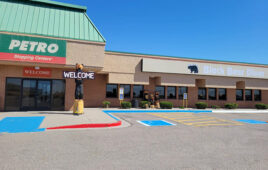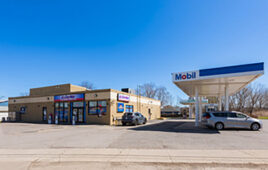Is consigned inventory in the convenience channel possible?
By Bill Scott, president, StoreReport LLC

Gasoline and diesel fuel is the single, highest investment a convenience store can make. In the past, it was common practice for fuel distributors to keep convenience store tanks filled with fuel and only bill the stores AFTER the fuel was sold. This is a called a ‘consignment arrangement.’ In fact, there are quite a few that are still doing this today. Why don’t we do this for groceries, beer, soft drinks and cigarettes? Why don’t we do this for everything we sell? The results would be amazing.
Seven years ago, I sat down with a grocery supplier whose customer was using our item-level inventory control system in their stores, and the discussion eventually got around to ‘consigned inventory.’
He told me that if I could prove that consigned grocery inventory would work, he’d write a check and put it in every one of his customers’ stores. He quickly ascertained that the savings in delivery costs alone would more than make up for the loss of profits being earned by delivering excess inventory to his customers’ stores, notwithstanding the costs incurred by ordering and warehousing excessive stock; and it would break the log-jam of unsold items at the retail level, speeding up the supply chain and increasing profits for everyone involved.
If convenience stores only carried what they could sell between delivery cycles, the only excess inventory would be a tiny amount of safety stock, just in case it was needed. Freshness could be guaranteed by replenishing the shelves with the safety stock prior to the arrival of new shipments.
Can you even imagine the increase in retailers’ working capital created by the elimination of overstock? Store deliveries could then be limited to the replenishment of the safety stock, and billions of dollars in working capital could be returned to the stores.
In my book “Retail Is Detail,” which I am giving to the members of our forum at no cost, I outline a plan to make convenience store consigned inventory a reality. Yes, it can be done, and you can start benefiting from it immediately.
Your first thought might be that suppliers will hate this, but if you read the book, you’ll quickly find out why the supplier mentioned above found it such an enticing concept. It’s a win-win situation for everyone, including the retailers’ customers, because initiating such a plan in retail stores would lower the cost of inventory overall.
Statistics Support the Facts
In a study of 30 typical convenience stores, I recently counted a total of 6,482 unique items that were actually sold during the month of August 2016. Note: This does not include the items present in stores that did not sell at all – roughly 10-15%.
Out of the total items tracked, only 225 items actually sold at a rate greater than or equal to once per day (4%) and 3,268 additional items (50%) sold between six times and once per week. The remaining 2,989 items (46%) sold less than once per week.

If retailers were to carry only 500 of the best-selling items in their market area, they would still have too much inventory in their stores. Why? Because retailers have as much as 1,000 days of some items that will never be sold before it rots. The waste created by too much inventory is monumental, and suppliers rarely take back overstock, and retailers and suppliers bear the enormous costs involved.
How can we justify buying and stocking the same number of items for each of these three segments? It’s crazy!
Is it any wonder that a mere 30% of the items in retail stores are producing all of the profits and cross-subsidizing the losses from the remaining 70%? It also explains why the net profit in convenience stores is 2.1% or less.
So why are we not doing this today?
There is a simple answer to that question: habit. If we can break the habit, we can solve the problem. Join us on LinkedIn at the ‘Convenience Store Supply Chain Management’ forum, and we will tell you more.




